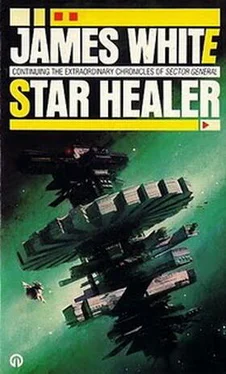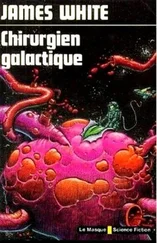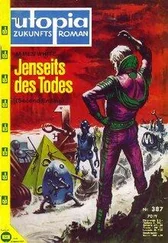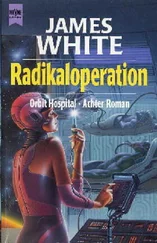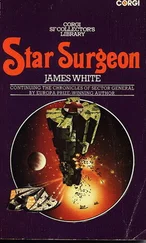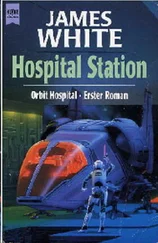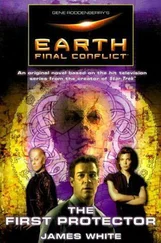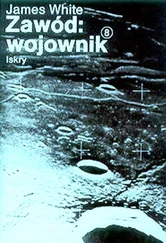“Go on,” O’Mara said, no longer sounding half-asleep.
Conway hesitated, thinking that his period of intensive Hudlar surgery, the visits to the FROB geriatric and infant wards, some old memories from his early childhood, and possibly material from his other-species mind partners had all contributed to an idea which was very likely unworkable, ethically questionable, and so ridiculous that O’Mara might well have second thoughts regarding his suitability as a future Diagnostician. But it was too late now to hold back.
“From my FROB tape and lectures at various times on Hudlar pathology,” he went on, nodding in acknowledgment toward Thornnastor, “it is clear that the various painful and incurable conditions to which the aged of that species are prey are traceable to a common cause. The loss of function in the limbs and the abnormal degree of calcification and fissuring at the extremities can be ascribed to the simple deterioration in circulation which is common to the aged of any species.
“This is not a new idea,” Conway said, glancing quickly toward Thornnastor and Murchison. “However, as a result of working on a large number of Hudlar limb and organ replacement operations from the Menelden accident, it occurred to me that the deterioration I observed in the organs of absorption and evacuation among the aged FROBs was very similar to the temporary condition which occurred during the replacement of a heart, although at the time I was too busy to note the signs consciously. In short, the problems of the FROB geriatrics are due to circulatory impairment or madequacy.
“If the idea isn’t new,” O’Mara said with a flash of his characteristic sarcasm, “why am I listening to it?”
Murchison was watching him in silence. Thornnastor continued to watch its food, Murchison, O’Mara, and Conway, also without speaking.
“The Hudlars are a very energy-hungry species,” Conway went on. “They have an extremely high metabolic rate which requires a virtually continuous supply of nutrient via their organs of absorption. The food thus metabolized serves the major organs, such as the two hearts, the absorption organs themselves, the womb when the entity is in gravid female mode, and, of course, the limbs.
“I had learned from the pathology lectures,” he continued, “that these six immensely strong limbs are the most energy-hungry system of the body, and demand close to eighty percent of the nutrient metabolized. But it was not until the recent Hudlar experience that my mind was drawn forcibly to this data, and to the fact which is also widely recognized, that it is the ultrahigh metabolic rate and excessive food requirement which enables the adult Hudlar to be so fantastically resistant to injury and disease.”
O’Mara was getting ready to interrupt again, and Conway went on quickly. “With the onset of old age their troubles invariably begin in the limbs, which demand an even greater proportion of the body’s available resources to fight it. This places increasing stress on the twin hearts, absorption, and evacuation organs, all of which require their share of and are interdependent on the circulatory system’s nutrient content. As a result these systems go into partial failure, which further reduces the blood supply to the limbs, and the body as a whole slides into a degenerative spiral.”
“Conway,” O’Mara said firmly, “I assume this lengthy but no doubt oversimplified clinical picture is for the benefit of the poor, ignorant psychologist so that he will understand the psychological questions when they come, if they ever come.
Continuing with its meal, Thornnastor said, “The clinical picture is oversimplified, I agree, but essentially correct, although your method of describing it suggests a new approach to the problem. I, too, am impatient to know what it is that you intend.”
Conway took a deep breath and said, “Very well. It seems to me that the drain on the age-reduced resources of these Hudlars, represented by the irreversible limb conditions, can be alleviated before onset. With reduced stress and a greater share of the available nutrient supply, the hearts and organs of absorption and elimination could maintain their functions for an additional several years while keeping up optimum levels of circulation to the remaining limb or limbs.”
All at once it seemed that O’Mara’s face in the screen had become a still picture; Murchison was staring at him with a shocked expression, and all four of Thornnastor’s eyes had turned to regard him.
“Naturally the procedure would be one of elective surgery, Conway went on, “and would not take place except at the request and the expressed permission of the entity concerned. The surgical problems involved in the removal of four or five limbs are relatively simple. It is the psychological preparation and aftereffects which are paramount and which would determine whether or not the procedure should be tried.”
O’Mara exhaled loudly through his nose, then said, “So you want me to tell you if it is possible to sell the pregeriatric Hudlars on the idea of voluntary multiple limb amputations?”
“The procedure,” Thornnastor said, “does seem, well, radical.”
“I realize that,” Conway said. “But from the Hudlar material available to me it is obvious that there is a general and abject fear of growing old among that species, caused by the quite appalling clinical picture of the average geriatric FROB. The fear is increased by the knowledge that the minds of the aging Hudlars remain clear and active, although there is the tendency common to all aging entities to want to live in the past. But it is the situation of a normal mind being trapped inside a rapidly degenerating and often painracked body which causes the greatest distress. It is possible that the Hudlars may not have a lot of sales resistance to the idea, and may even welcome it.
“But my information is purely subjective,” he went on, “and comes from recent personal experience and from the feelings of the Hudlar who donated my tape, so my thinking may not be completely trustworthy. It requires the objective viewpoint of a psychologist with extraterrestrial experience, including that of the FROB life-form, to decide whether or not my idea has merit.”
O’Mara was silent for a long time; then he nodded and said, “What can you offer these close-to-limbless Hudlars, Conway? What could they do which would make their extended, less painful lives worth living?”
“I have had time to consider only a few of the possibilities,” he replied. “Their situation would be similar to that of the Hudlar amputees we will be sending home in a few weeks’ time. They will have limited mobility on prosthetics, one or two of their forelimbs will remain fully functioning, and they should remain mentally and physically effective until shortly before termination. I shall have to discuss the physiological details with Thornnastor before I can be certain of this, but—”
“It is a fair assumption, Conway,” the Tralthan broke in. “I have no doubt that you are right.”
“Thank you, sir,” Conway said, feeling his face growing warm at the compliment. To O’Mara he went on, “On Hudlar medical science is in the early stages and for some time it will be primarily concerned with the treatment of diseases in the very young, since the adult members of the species do not take sick. These pediatric cases, although ill, remain very active and require only minimal restraint and supervision while the administered medication is doing its work. Our aged amputees will still be physically capable of withstanding without injury the enthusiasm and playfulness of the halfton Hudlar toddlers, and we are already training the first of a line of FROB pediatric nurses who will be able to instruct them …
Читать дальше
